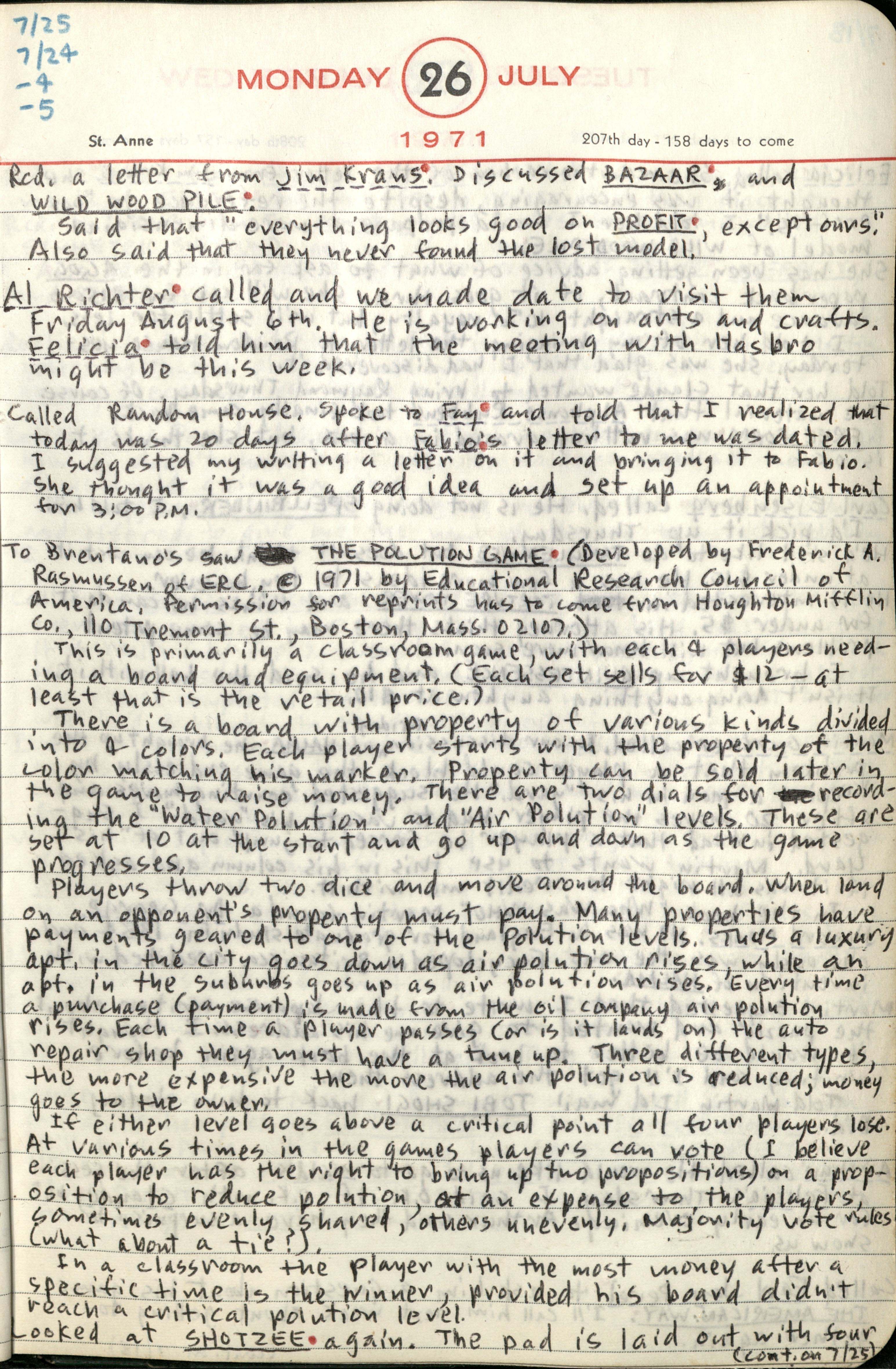1971_Sackson_227_July 26.jpg: Page #1
Original title: 1971_Sackson_227_July 26.jpg

Transcription
7/25
7/24
-4
-5
Monday 26 July 1971
St. Anne 207th day - 158 days to come
Rcd. a letter from Jim Kraus. Discussed BAZAAR and
WILD WOOD PILE.
Said that "everything looks good on PROFIT, except ours."
Also said that they never found the lost model.
Al Richter called and we made date to visit them Friday August 6th. He is working on arts and crafts. Felicia told him that the meeting with Hasbro might be this week.
Called Random House. Spoke to Fay and told that I realized that today was 20 days after Fabio's letter to me was dated. I suggested my writing a letter on it and bringing it to Fabio. She thought it was a good idea and set up an appointment for 3:00 P.M.
To Brentano's saw THE POLUTION GAME (Developed by Frederick A.
Rasmussen of ERC. [copyright] 1971 by Educational Research Council of
America. Permission for reprints has to come from Houghton Mifflin
Co., Ilo Tremont St., Boston, Mass. 02107.)
This is primarily a classroom game, with each 4 players need-
ing a board and equipment. (Each set sells for $12 - at
least that is the retail price.)
There is a board with property of various kinds divided
into 4 colors. Each player starts with the property of the
color matching his marker. Property can be sold later in
the game to raise money. There are two dials for record-
ing the "Water Pollution" and "Air Pollution" levels. These are
set at 10 at the start and go up and down as the game
progresses.
Players throw two dice and move around the board. When land
on an opponent's property must pay. Many properties have
payments geared to one of the pollution levels. Thus a luxury
apt. in the city goes down as air pollution rises, while an
apt. in the suburbs goes up as air pollution rises. Every time
a purchase (payment) is made from the oil company air pollution
rises. Each time a player passes (or is it lands on) the auto
repair shop they must have a tune up. Three different types,
the more expensive the more the air pollution is reduced; money
goes to the owner.
If either level goes above a critical point all four players lose.
At various times in the games players can vote (I believe
each player has the right to bring up two propositions) on a prop-
osition to reduce pollution, at an expense to the players,
sometimes evenly shared, others unevenly. Majority vote rules
(what about a tie?).
In a classroom the player with the most money after a
specific time is the winner, provided his board didn't
reach a critical pollution level.
Looked at SHOTZEE again. The pad is laid out with four
(cont. on 7/25)